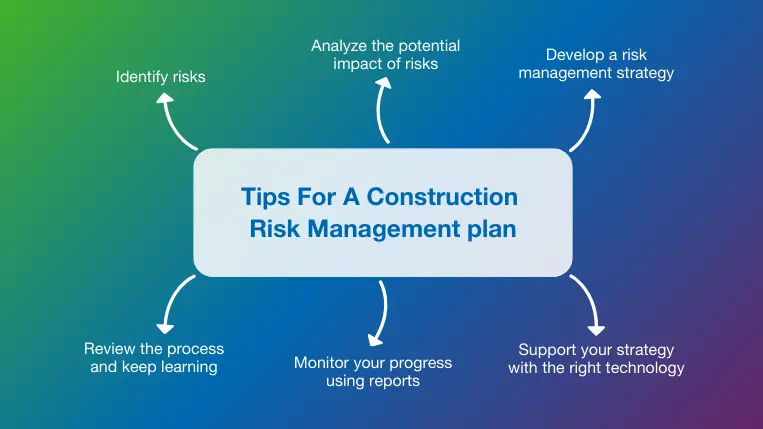Checking out the Importance of Risk Management for Effective Decision-Making Methods
In the elaborate globe of service, Risk Management becomes an essential consider the decision-making process. The ability to determine possible risks and opportunities, and plan as necessary, can lead to the distinction in between success and failing. With tools such as SWOT and PESTEL, organizations are equipped to make educated selections, fostering resilience and flexibility in an ever-changing setting. Wondering exactly how this works? Let's unpack the dynamics even more.
Understanding the Concept of Risk Management
Risk Management, an essential part in decision-making, is commonly misunderstood or oversimplified. Risk Management includes organized and self-displined strategies, using data and informative assessments. From economic uncertainties, lawful liabilities, calculated Management mistakes, to accidents and natural calamities, it deals with numerous risks - importance of risk management.
The Duty of Risk Management in Decision-Making Processes
In the world of critical preparation and service operations, Risk Management plays an integral duty in decision-making procedures. Risk Management therefore comes to be an important tool in decision-making, helping leaders to make enlightened selections based on a detailed understanding of the dangers entailed. Risk Management offers as a crucial element in the decision-making processes of any company.
:max_bytes(150000):strip_icc()/risk-management-4189908-FINAL-2-976ae194e01848618ca94941ab9d2395.jpg)
How Risk Management Enhances Strategic Planning
In the context of strategic planning, Risk Management plays a pivotal duty. Starting with the identification of potential threats, it additionally encompasses the application of Risk reduction steps. The role of Risk Management is vibrant but not fixed, as it demands constant surveillance and adjusting of methods.
Determining Prospective Risks

Executing Risk Reduction
Risk mitigation techniques can range from Risk avoidance, Risk transfer, to run the risk of decrease. Each method ought to be tailored to the certain Risk, considering its possible effect and the organization's Risk tolerance. Reliable Risk mitigation calls for a deep understanding of the Risk landscape and the potential influence of each Risk.
Surveillance and Changing Strategies
Though Risk mitigation is an important action in critical planning, continual tracking and change of these methods is equally crucial. This recurring process allows companies to identify brand-new risks and reassess existing ones, making certain the applied techniques continue to be efficient in the ever-changing business atmosphere. It additionally gives an opportunity to examine the success of the Risk Management procedures, permitting modifications to be made where required, more enhancing tactical preparation. Efficient tracking and modification call for making use of analytics find out and essential efficiency indications (KPIs) to gauge effectiveness. These tools give useful data-driven understandings that can inform critical decision-making. Tracking and changing Risk Management techniques is an important part for improving an organization's resilience and tactical planning.
Instance Researches: Effective Risk Management and Decision-Making
In the world of service and financing, effective Risk Management and decision-making commonly serve as the columns of thriving ventures. These situations highlight the worth of sharp Risk Management in decision-making processes. These situations highlight the essential duty of Risk Management in calculated decision-making.
Tools and Strategies for Effective Risk Management
These tools, such as Risk signs up and heat maps, help in determining and analyzing prospective threats. Risk response approaches, a crucial part of Risk Management, involve accepting, avoiding, transferring, or mitigating risks. With these techniques and tools, decision-makers can navigate the facility landscape of Risk Management, thereby assisting in notified and efficient decision-making.
Future Patterns in Risk Management and Decision-Making Strategies
As we check out the large landscape of Risk Management, it becomes evident that the strategies and devices utilized today will continue to advance. Future fads aim towards an enhanced reliance on modern technology, with artificial knowledge and artificial intelligence playing considerable roles. These technologies will enable companies to anticipate potential threats with higher accuracy and make even more enlightened choices. Furthermore, there will be an expanding emphasis on resilience, not simply in handling dangers but also in recovering from unfavorable situations. The idea of Risk society, where every member of a company is aware and included in Risk Management, will certainly acquire more importance. These trends advertise an even more inclusive and webpage aggressive approach in the direction of Risk Management and decision-making.
Verdict

Risk Management hence comes to be a crucial tool in decision-making, assisting leaders to make informed selections based on a thorough understanding of the threats involved. Risk reduction techniques can range from Risk evasion, Risk transfer, to risk decrease (importance of risk management). Efficient Risk reduction needs a deep understanding of the Risk landscape and the possible influence of each Risk. published here Risk response techniques, a vital part of Risk Management, include accepting, preventing, transferring, or mitigating risks. The idea of Risk culture, where every participant of an organization is conscious and involved in Risk Management, will acquire much more prominence
 Shaun Weiss Then & Now!
Shaun Weiss Then & Now! Yasmine Bleeth Then & Now!
Yasmine Bleeth Then & Now! Richard Thomas Then & Now!
Richard Thomas Then & Now! Samantha Fox Then & Now!
Samantha Fox Then & Now! Ricky Schroder Then & Now!
Ricky Schroder Then & Now!